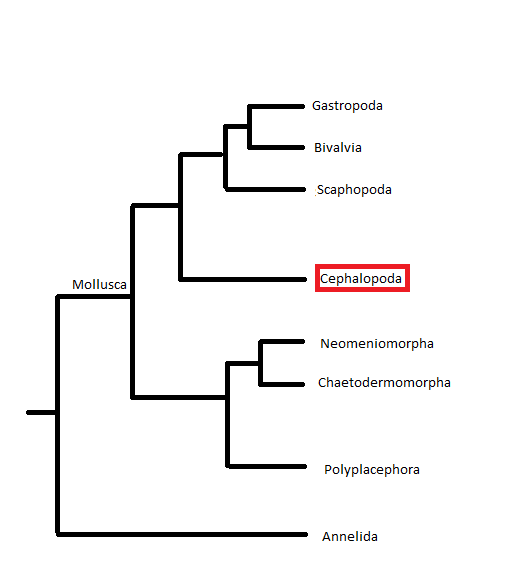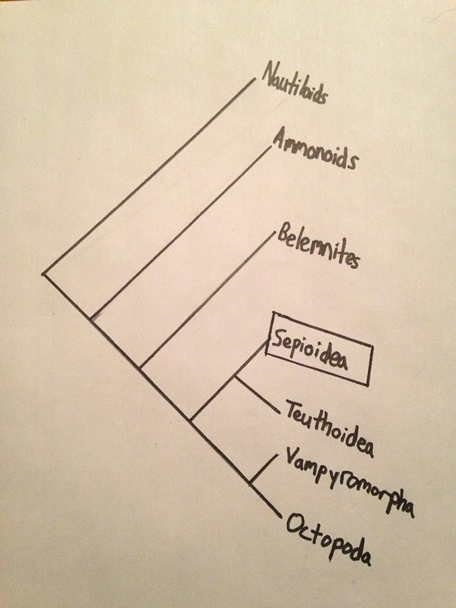Classification
Domain - Eukarya
Kingdom - Animalia
Phylum - Mollusca
Class - Cephalopoda
Order - Sepioidea
Family - Sepiidae
Genus - Sepia
Species - Sepia officinalis
Eukarya -This domain is characterized by cells that have a double bounded nucleus, cytoplasm, and a plasma membrane (Campbell 2008). On the picture below you can see the nucleus is enclosed in a nuclear envelope.
Animalia - This kingdom, also known as metazoa, is characterized by organisms that are multicellular, heterotrophic (consumes other organisms to obtain nutrients), and lack cell walls. Animals are different from fungi because animals ingest their food, then digest their food with enzymes. The picture above shows a single animal cell. Animal cells have a posterior flagellum that classifys them under the major clade Opisthokonta (Campbell 2008) .
Mollusca - This phylum is characterized by organisms that have a soft body, a muscular foot, an internal space (called a coelem), a visceral mass that contains internal organs, and a mantle that may or may not secrete a calcium carbonate shell. In cuttlefish, the mantle extends larger than the visceral mass and creates a cavity called a mantle cavity. Also, many mollusks, like the, cuttlefish, move by jet propulsion (Campbell 2008).
Cephalopoda - Cephalopods inhabit marine environments, and are recognized by bilateral body symmetry, a distinct head, and tentacles or arms evolved from the ancestral molluscan foot (NOVA 2007). This class includes animals like the humboldt squid and the northern calamari.
The picture below shows the different classes that fall under the molluscan phylum, based on morphology. It is important to notice where Cephalopoda falls on this phylogenetic tree because that is the class Sepia officinalis fall under. By looking at this tree, one can see how the cephalopods are realted to organisms in other classes (Kocot 2011).
Sepioidea - This order of species have eggs that attach to a substrate separatly or in unorganized groups. They also have two eyelids, and the suckers on their arms are encircled with muscle (Tree of Life 2004).
This phylogenetic tree compares the age of orders of cephalopods, which are divided into six clades, based on morphology. It is important to recognize the branch labeled Sepioidea because this is the category that cuttlefish fall under (UCMP 2006).
Sepiidae - These anmimals have flattened arms, tentacles that can retract into a pocket of the body, an eye pore inside of a ventral eyelid, narrow fins, and the shell of a cuttlebone (Tree of Life 2004).
Sepia - These cephalopods do not have a pore at the posterior end of their mantle and their cuttlebone is about the same length as their mantle.
Sepia officinalis - This species has an oval body and can only grow to a maximum length of 40 cm (Marine Species 2013). In English, the word Sepia refers to a "rich brown pigment prepared from the ink of cuttlefishes" (Audio English 2000). The word officinalis is a Latin word that means "used in medicine" (MMS Gardens).
To learn more about the classification of this organism or other organisms, explore the Tree of Life web project.
To find out more about where this fascinating creature lives, visit the habitat page!
![By Parent Géry (Own work) [Public domain], via Wikimedia Commons](travelportal/images/newheader.jpg)
![By LadyofHats (Mariana Ruiz) [Public domain], via Wikimedia Commons](animal%20cell.png)

